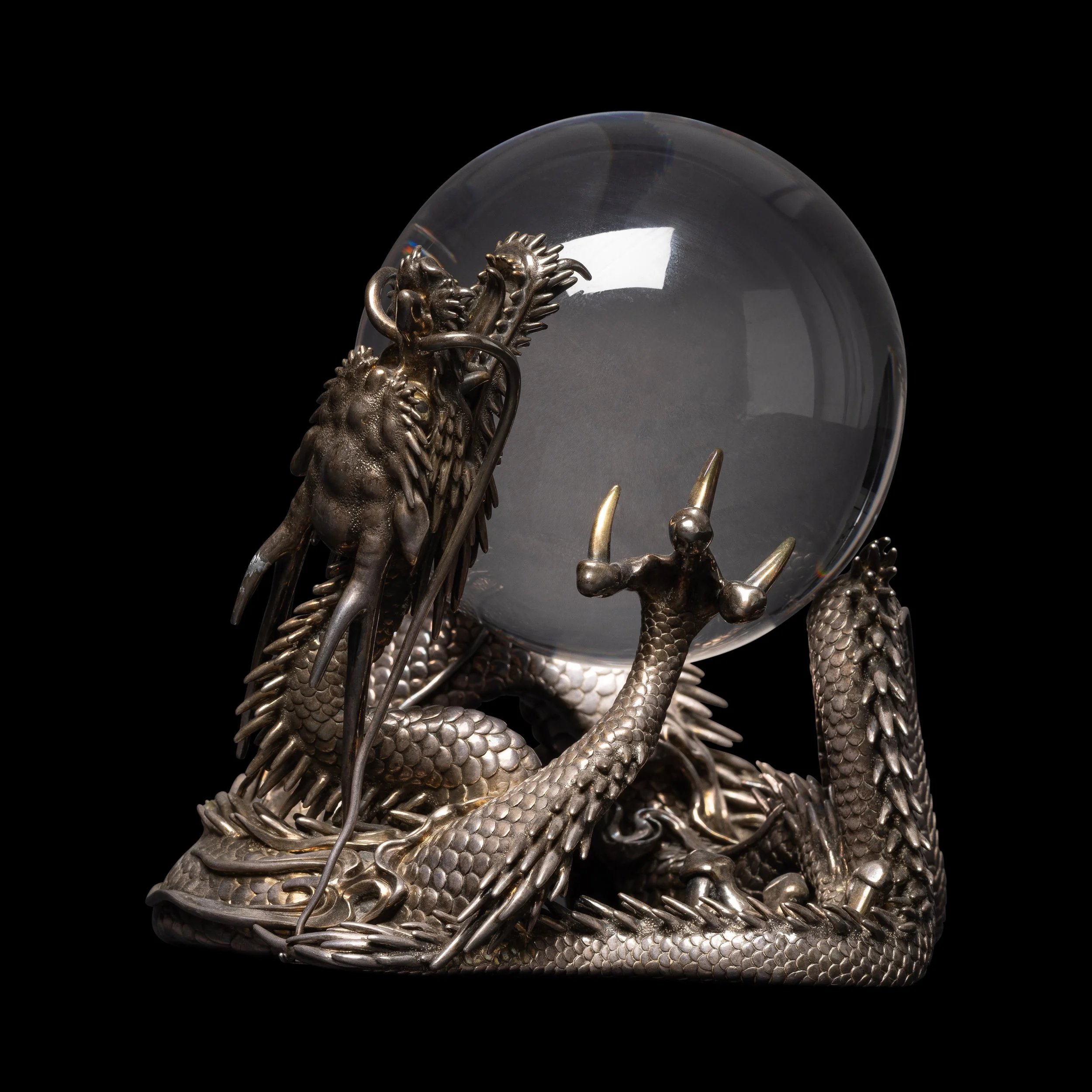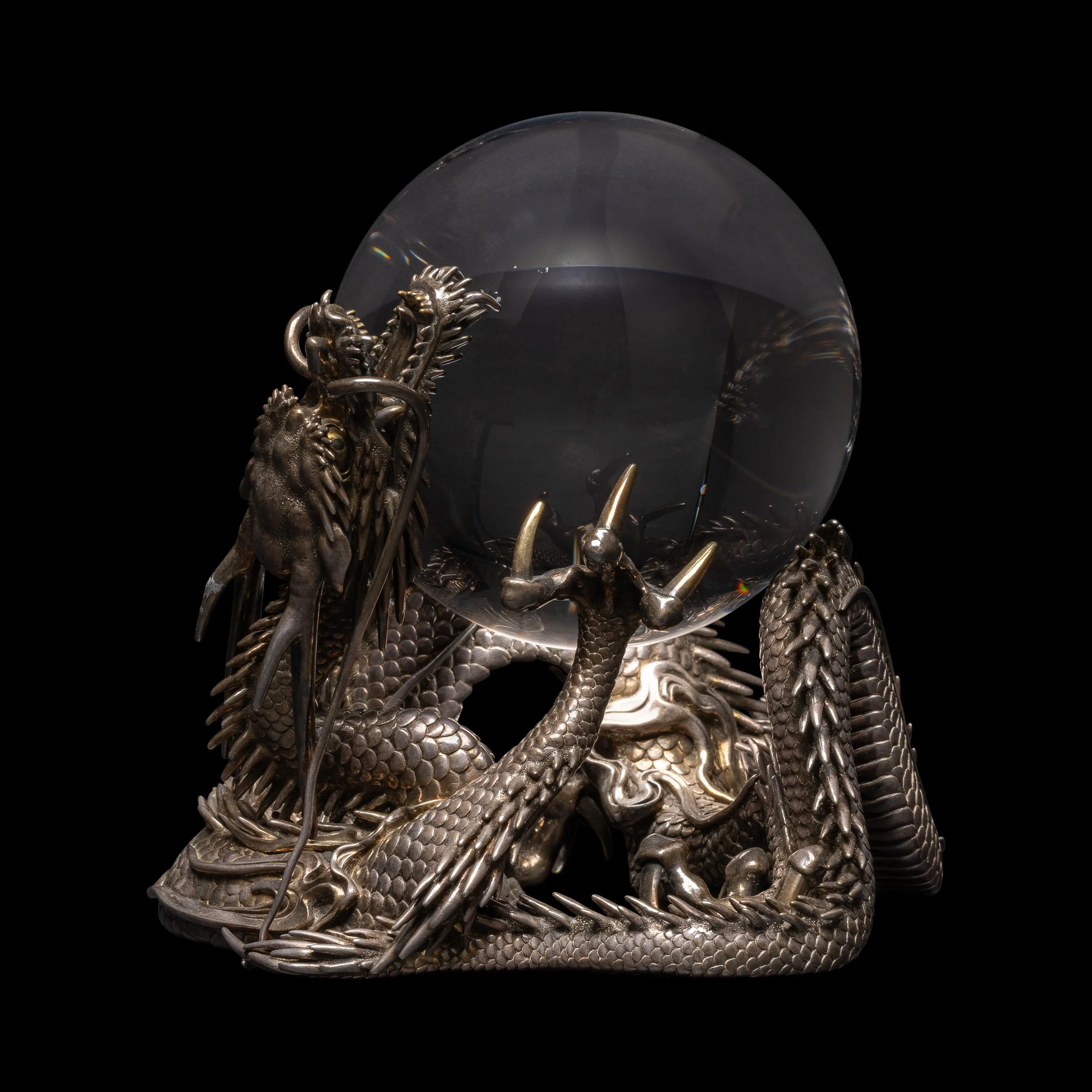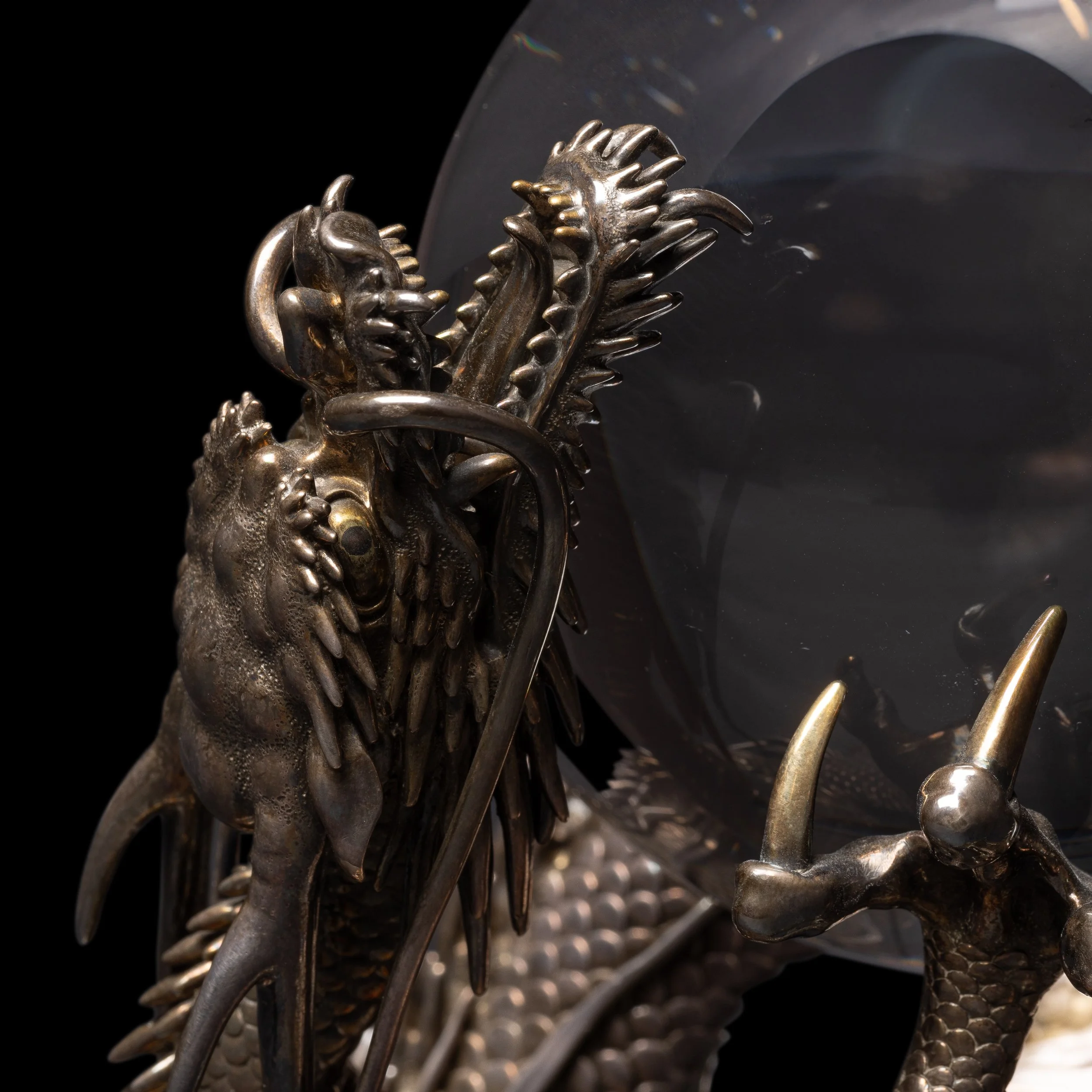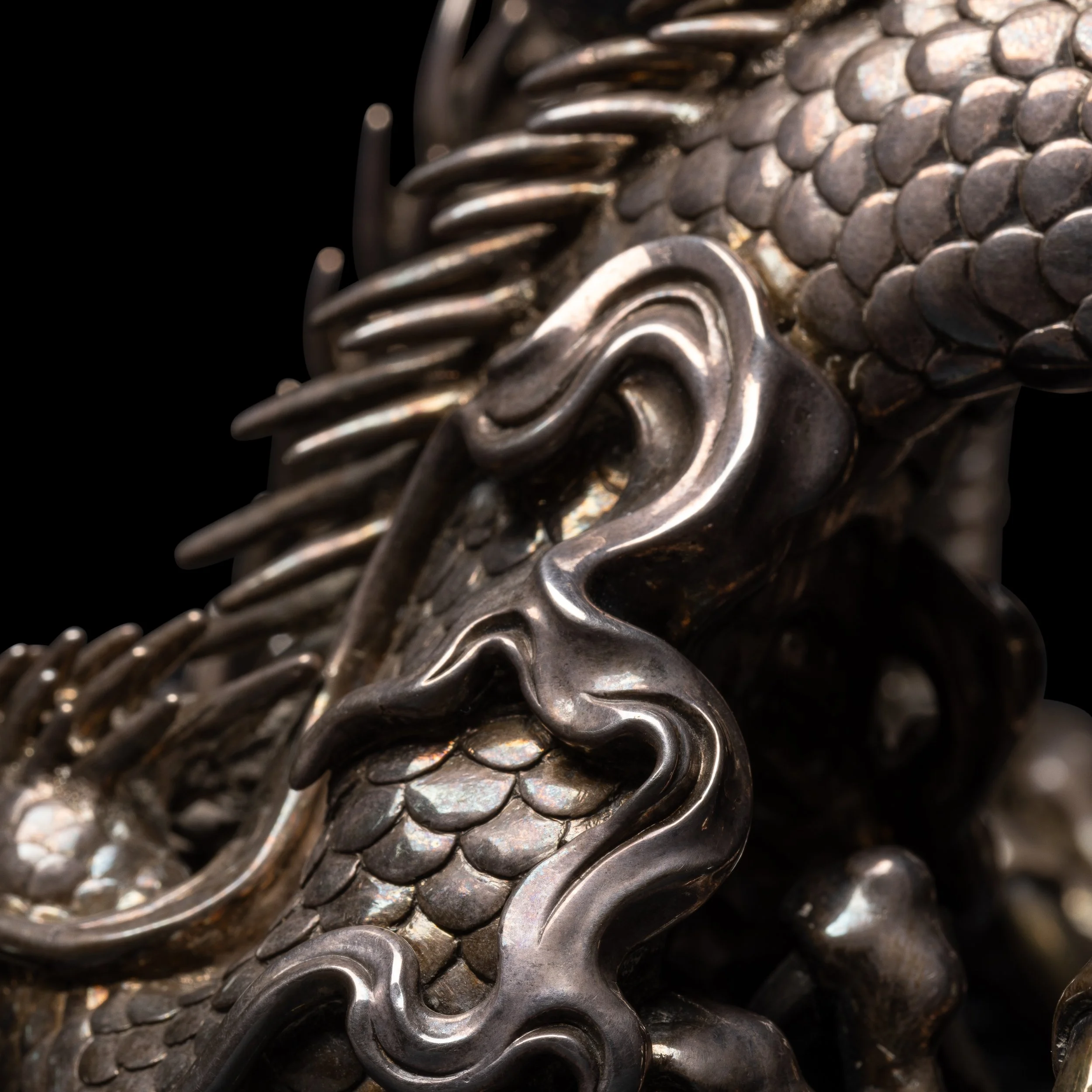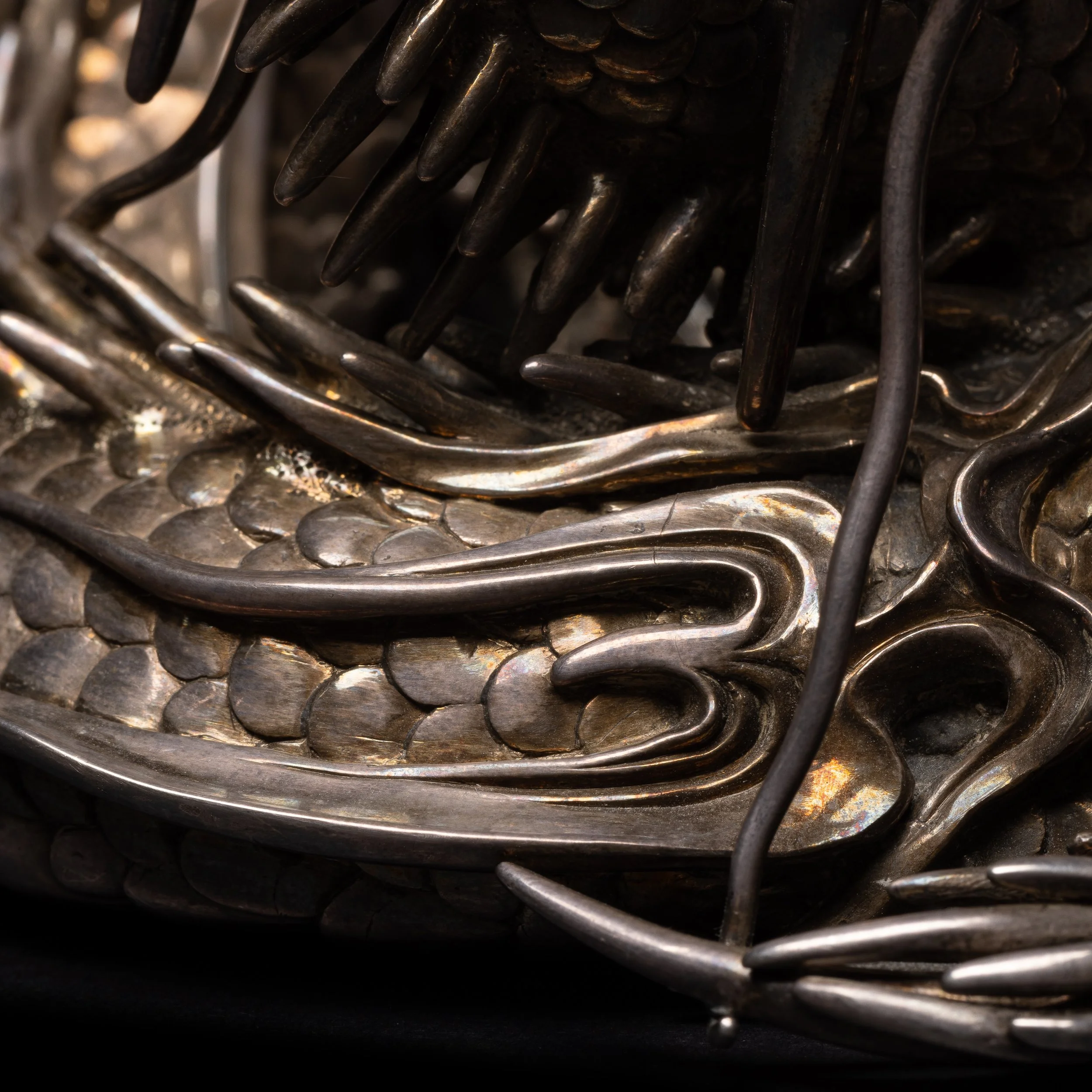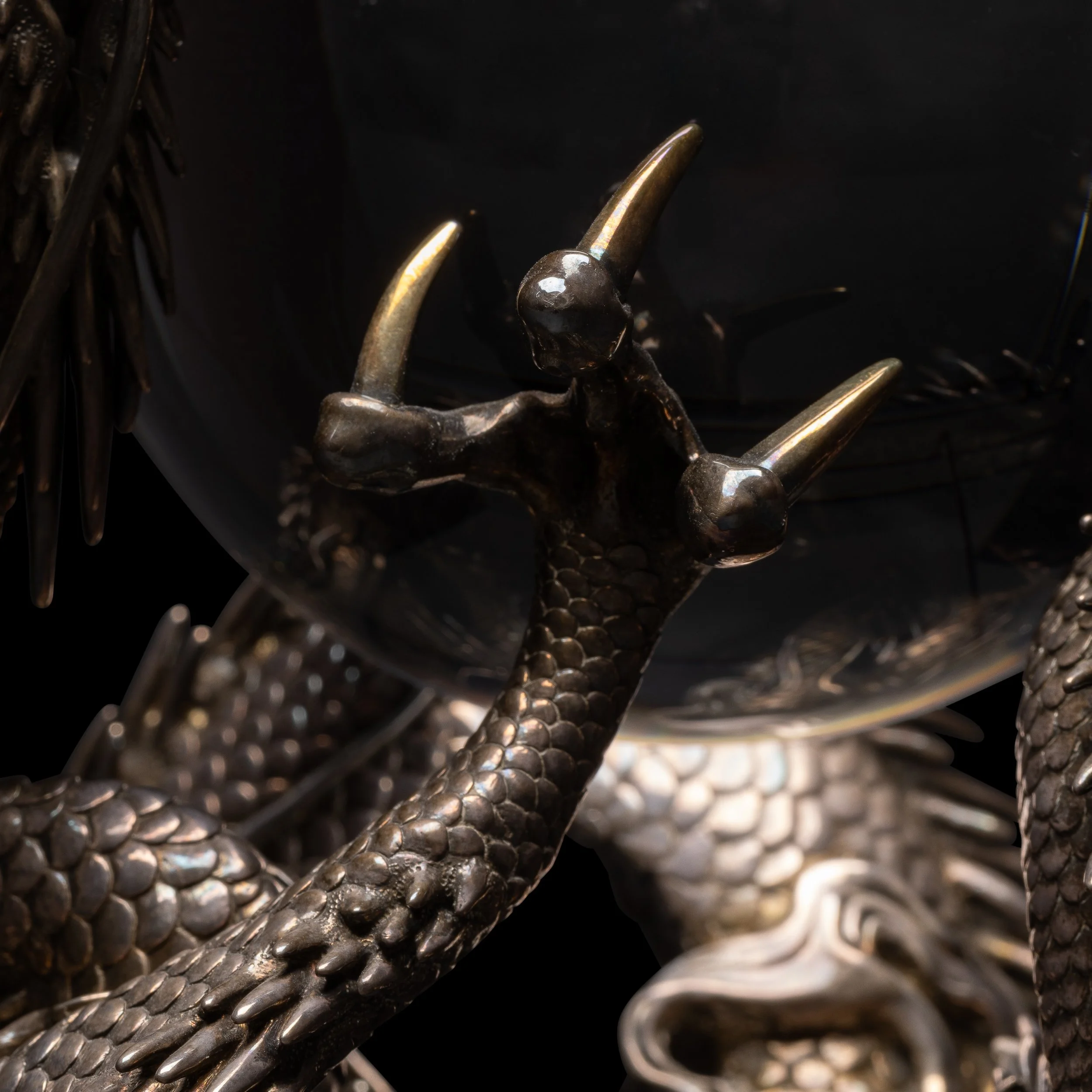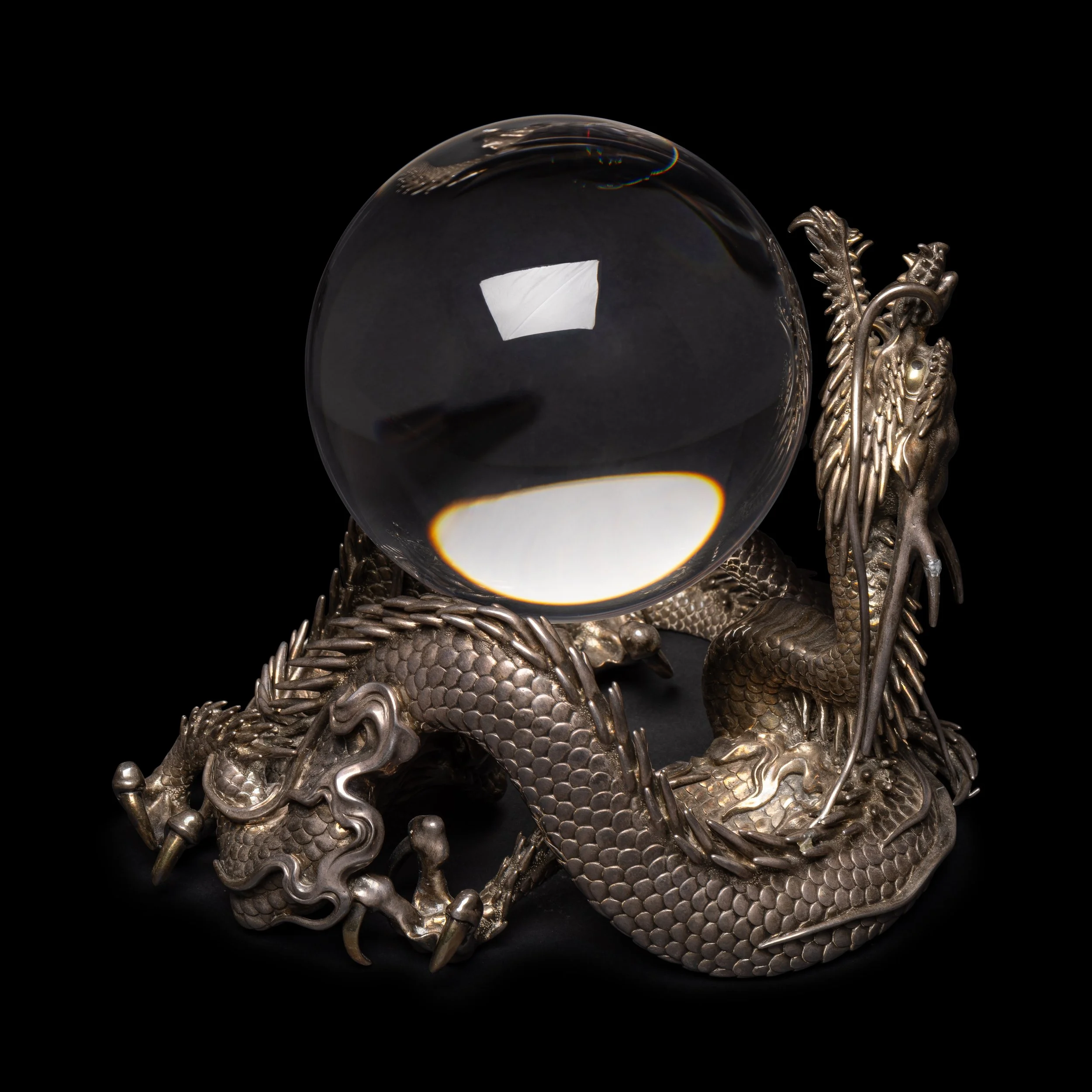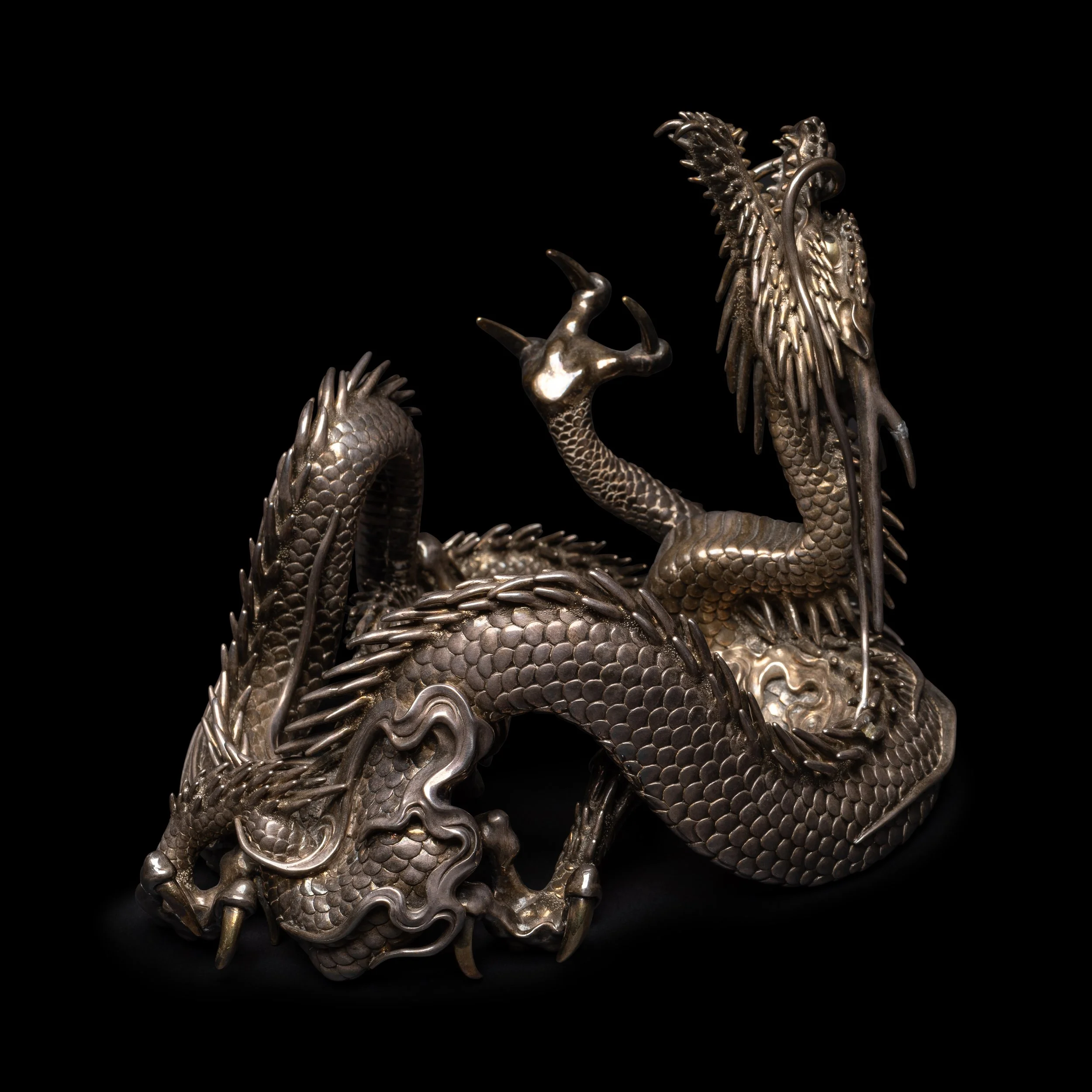a rock crystal sphere on a silver dragon
This Meiji-period decorative sculpture features a luminous rock crystal sphere resting in the center-top of a masterfully cast and chiseled silver dragon. The fierce-looking dragon, incised with the signature of Gyokuryuken Sanmi (also known as Kazumi) on the underside within an oblong cartouche, is coiled in a dynamic pose, showcasing exquisite craftsmanship. Its eyes, teeth, and claws are richly adorned with gilt, and the eyes themselves are inlaid with shakudo, lending a striking contrast to the silver form. The body of the dragon is meticulously covered in scales and horns that run down the spine to the tail.
Accompanying the piece is a Gemological Institute of America (GIA) certificate, number 6214457397, dated February 10, 2021, which verifies that the sphere is genuine rock crystal.
The dragon holds profound significance in Japanese art and mythology, and is associated with the holy nature of Shinto and wisdom of Buddhism. From the Kofun period (4th–7th centuries) onward, dragon imagery has appeared in Japanese visual culture, adorning stone-walled tomb chambers alongside legendary creatures such as tigers, phoenixes, and gryphons. In Shinto tradition, the dragon deity Ryujin dwells beneath the sea, wielding a mystical jewel that governs the ocean’s tides. Within esoteric Buddhism, the dragon is often depicted alongside a sword, symbolizing the rope and double-edged blade wielded by Fudo Myo-o, the fierce protector of Buddhist teachings.
This work stands as a testament to the technical brilliance and artistic refinement of the Meiji period (1868–1912), a time when Japanese artisans mastered the fusion of traditional symbolism with intricate metalwork, creating objects of both aesthetic and spiritual significance.
For comparison of a silver ornament of a dragon and crystal ball, see Joe Earle, Splendors of Meiji, Treasures of Imperial Japan, Masterpieces from the Khalili Collection (St. Petersburg, Fla.: Broughton International, Inc., 1999), pl. 135.
Signed Gyokuryuken Sanmi
Japan, Meiji Period, 19th century
-
Christie’s New York, 16 March 2021, lot 37.
-
6 ⅝ in. (16.8 cm.) high
-
Accompanying the piece is a Gemological Institute of America (GIA) certificate, number 6214457397, dated February 10, 2021, which verifies that the sphere is genuine rock crystal.


